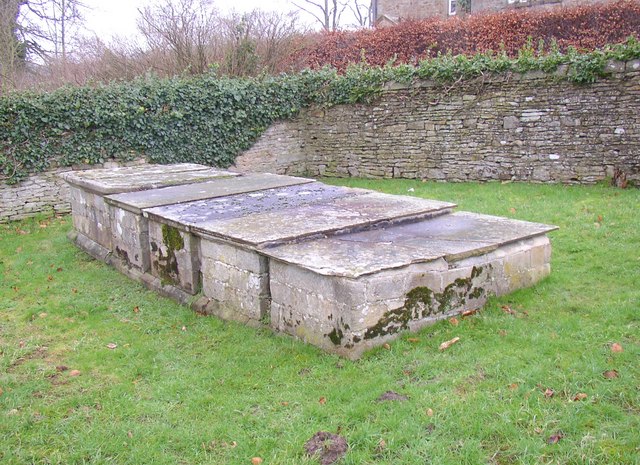Farfield Friends Meeting House on:
[Wikipedia]
[Google]
[Amazon]
Farfield Friends Meeting House is a Quaker meeting house no longer regularly in use by a Quaker meeting and now owned by the
 In the graveyard to the northeast of the meeting house are five joined chest tombs to the Myers family dated between 1687 and 1737. They are designated as a Grade II listed building. This style of tomb is unusual in Quaker burial grounds as it was considered to be ostentatious and was later discouraged by the movement.
In the graveyard to the northeast of the meeting house are five joined chest tombs to the Myers family dated between 1687 and 1737. They are designated as a Grade II listed building. This style of tomb is unusual in Quaker burial grounds as it was considered to be ostentatious and was later discouraged by the movement.
Newspaper article about the title deed for the building
{{Authority control 17th-century Quaker meeting houses 1689 establishments in England Churches preserved by the Historic Chapels Trust Grade II* listed buildings in West Yorkshire Grade II* listed religious buildings and structures 17th-century Protestant churches Religious buildings and structures completed in 1689 Quaker meeting houses in England
Historic Chapels Trust
The Historic Chapels Trust is a British Registered Charity set up to care for redundant non- Anglican churches, chapels, and places of worship in England. To date, its holdings encompass various nonconformist Christian denominations and Rom ...
. It is located some north of the village of Addingham, West Yorkshire
West Yorkshire is a metropolitan and ceremonial county in the Yorkshire and Humber Region of England. It is an inland and upland county having eastward-draining valleys while taking in the moors of the Pennines. West Yorkshire came into exi ...
, England. It is recorded in the National Heritage List for England
The National Heritage List for England (NHLE) is England's official database of protected heritage assets. It includes details of all English listed buildings, scheduled monuments, register of historic parks and gardens, protected shipwrecks, a ...
as a designated Grade II* listed building
In the United Kingdom, a listed building or listed structure is one that has been placed on one of the four statutory lists maintained by Historic England in England, Historic Environment Scotland in Scotland, in Wales, and the Northern Irel ...
.
History
In 1686, Anthony Myers provided a plot of land to be used as a Quaker burial ground. Three years later, in 1689, the Act of Toleration was passed giving the right to Nonconformists to build places of worship. In that year Anthony Myers gave a further adjacent plot of land for building a meeting house; the construction of this was completed during the same year.Architecture and furnishings
The small meeting house is typical of rural Quaker meeting houses of the period, poignant in its simplicity. It is constructed in stonerubble
Rubble is broken stone, of irregular size, shape and texture; undressed especially as a filling-in. Rubble naturally found in the soil is known also as 'brash' (compare cornbrash)."Rubble" def. 2., "Brash n. 2. def. 1. ''Oxford English Dictionar ...
with ashlar dressings and has a stone slate roof. The building is in a single storey with three bays. There is one door, and the three windows have mullion
A mullion is a vertical element that forms a division between units of a window or screen, or is used decoratively. It is also often used as a division between double doors. When dividing adjacent window units its primary purpose is a rigid supp ...
s; at the corners of the building are quoins. The interior consists of a single cell. At its east end is a dais
A dais or daïs ( or , American English also but sometimes considered nonstandard)dais
in the Random House Dictionary< ...
with settles and turned balusters.
in the Random House Dictionary< ...
External features
 In the graveyard to the northeast of the meeting house are five joined chest tombs to the Myers family dated between 1687 and 1737. They are designated as a Grade II listed building. This style of tomb is unusual in Quaker burial grounds as it was considered to be ostentatious and was later discouraged by the movement.
In the graveyard to the northeast of the meeting house are five joined chest tombs to the Myers family dated between 1687 and 1737. They are designated as a Grade II listed building. This style of tomb is unusual in Quaker burial grounds as it was considered to be ostentatious and was later discouraged by the movement.
Present day
The building is today owned by theHistoric Chapels Trust
The Historic Chapels Trust is a British Registered Charity set up to care for redundant non- Anglican churches, chapels, and places of worship in England. To date, its holdings encompass various nonconformist Christian denominations and Rom ...
who have restored it and aim to preserve it in perpetuity, as part of the physical evidence of British religious life. It can be visited during daylight hours. Three car parking spaces and picnic area are adjacent. A long-distance footpath
A long-distance trail (or long-distance footpath, track, way, greenway (landscape), greenway) is a longer recreational trail mainly through rural areas used for hiking, backpacking (wilderness), backpacking, cycling, horse riding or cross-cou ...
, the Dales Way
The Dales Way is an long-distance footpath in Northern England, from (south-east to north-west) Ilkley, West Yorkshire, to Bowness-on-Windermere, Cumbria. This walk was initially devised by the West Riding Ramblers' Association with the 'lead ...
, passes through the grounds.
See also
* List of chapels preserved by the Historic Chapels TrustReferences
External links
Newspaper article about the title deed for the building
{{Authority control 17th-century Quaker meeting houses 1689 establishments in England Churches preserved by the Historic Chapels Trust Grade II* listed buildings in West Yorkshire Grade II* listed religious buildings and structures 17th-century Protestant churches Religious buildings and structures completed in 1689 Quaker meeting houses in England